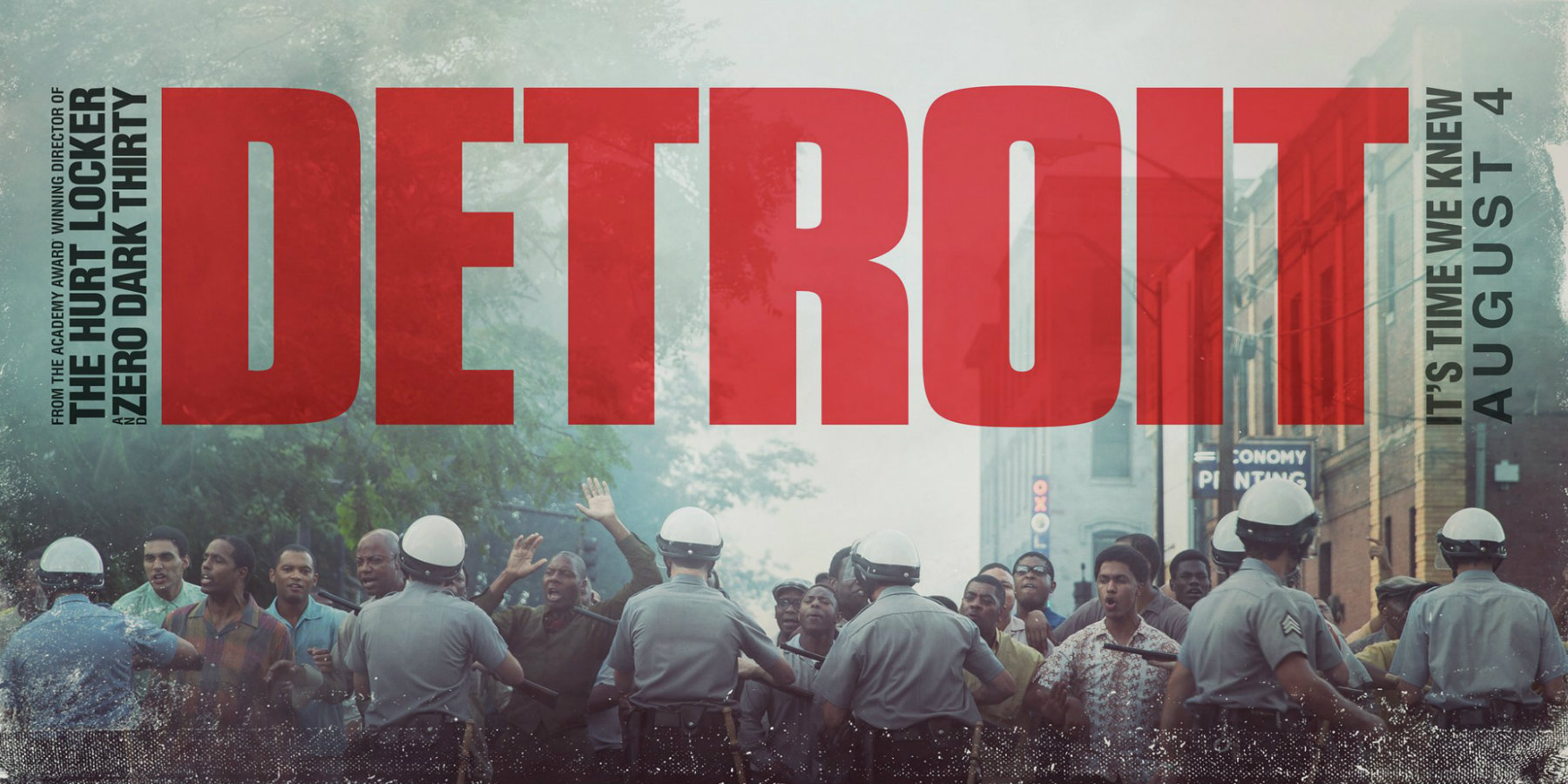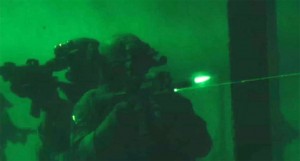Detroit
Posted on August 3, 2017 at 2:10 pm
B +| Lowest Recommended Age: | Mature High Schooler |
| MPAA Rating: | Rated R for strong violence and pervasive language |
| Profanity: | Very strong language including racist epithets |
| Alcohol/ Drugs: | Drinking, smoking, drugs |
| Violence/ Scariness: | Very intense and graphic violence including murder and brutal beatings, disturbing images |
| Diversity Issues: | A theme of the movie |
| Date Released to Theaters: | August 4, 2017 |
| Date Released to DVD: | December 11, 2017 |
If a newspaper is the first draft of history, perhaps it is art that conveys the truth of the past with context, nuance, and power. And so “Detroit,” Kathryn Bigelow’s story of a horrifying, tragic murder of three black men during the Detroit riots of 1967, meaningfully begins with the paintings of Jacob Lawrence documenting the migration of black families from the rural South to northern urban centers and the unrest triggered by the fear and flight of the white residents. “The promise of equal opportunity for all turned out to be an illusion. Change was inevitable.” And, for some people who were happy as things were, terrifying.
And so “Detroit,” directed by Bigelow’s and scripted by her “Zero Dark Thirty” and “The Hurt Locker” screenwriter Mark Boal aspires aspires to be art that tells the story of one incident that illuminates not only its own time but ours as well. It is based on intensive research including court transcripts and interviews with people who were there.
Television news in the 1967 featured footage of riots, with looters smashing windows, even at stores with “Soul Brother” spray-painted in hope that being owned by black neighbors would keep them safe. There was not much, if any coverage of an incident at the Algiers Motel, where white cops abused a group of young black men and two white women and murdered three unarmed teenagers. This was before the time that a bystander could record the beating of a Rodney King, and so it had to wait for the Hollywood version.
The threat of anarchy and violence was so unsettling during the Detroit riots that Lyndon Johnson sent 1100 National Guardsmen — to protect the police. The state police were there, too, and we see one officer recognize that horrible abuse is taking place, but leave, saying, “I don’t want to get in any civil rights mixup.” The pervasive chaos and fear inspires one character to say, “Now everybody knows what it’s like to be black.”
Reportedly, Bigelow encouraged her actors to develop their own dialog so it would be more authentic to their own perceptions and experience. She has a gift for conveying urgency and putting the audience in the middle of the action. The characters who take us through the story include a mild-mannered security guard (“The Force Awakens'” John Boyega), a just-returned Vietnam vet (Anthony Mackie), and a young white cop in way over his head, who has no hesitation about planting a weapon on a murder victim (“The Revenant’s” Will Poulter). It is in no way excusing his behavior to say that his behavior here is as much based on fear, anger, and ignorance as in racism.
I hope the film will not always feel as timely as it does now. If that is true, it will be in part because films like this provide context that helps us understand not only the origins of Black Lives Matter but the lives of the parents and grandparents who were unable or unwilling to tell their own stories.
NOTE: I recommend the thoughtful responses to this film from African-American critics, including Angelica Jade Bastien, who found the portrayal of brutality exploitive (“It wasn’t the relentless violence inflicted upon black bodies or the fiery devastation of the riots ripping apart Detroit but the emptiness behind these moments that got under my skin.”)
Parents should know that this film includes explicit depiction of a real-life incident of police abuse and brutality including murder of three unarmed teenagers, with rioting and looting, many disturbing and graphic images, very strong language, drinking, smoking, drugs, sexual references and brief nudity.
Family discussion: What would make you believe that justice had been done in this case? How does this story help us to understand some of today’s conflicts?
If you like this, try: documentaries about this era including “4 Little Girls,” “Eyes on the Prize,” and “12th and Clairmount”



